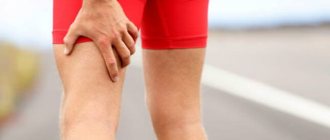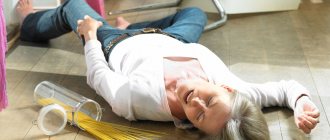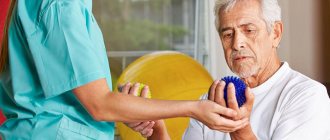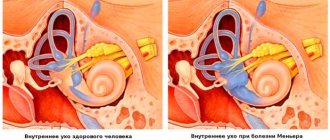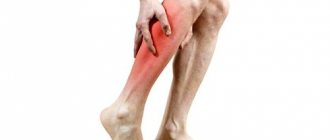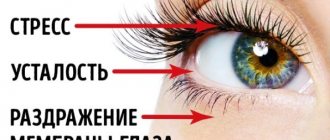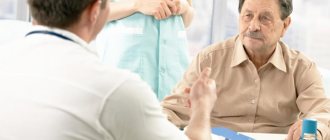Almost everyone has experienced involuntary muscle contraction at least once during their life. It occurs suddenly, puts you in an awkward position, causing the muscle to contract convulsively.
The site provides reference information. Adequate diagnosis and treatment of the disease is possible under the supervision of a conscientious doctor. Any medications have contraindications. Consultation with a specialist is required, as well as detailed study of the instructions! Here you can make an appointment with a doctor.
Involuntary muscle contraction
More often (if we do not talk about serious neurological pathologies), a nervous tic occurs - a sudden involuntary contraction of the muscles of the face or neck.
These movements are erratic and painless. This is mainly winking, licking lips, chewing, a jerky half-smile, trembling a cheek or eyelid.
Contractions of other parts of the body are called hyperkinesis. They mainly occur in the muscles of the arms or legs.
Involuntary contraction can occur in the face or limbs, but in the muscles of the thigh, abdomen, and occur during sleep.
Find the answer
Are you having any problem? Enter “Symptom” or “Name of the disease” into the form, press Enter and you will find out all the treatment for this problem or disease.
What are the causes of contractions in children and adolescents
Involuntary muscle contractions affect about 10% of children during puberty or earlier.
Among teenagers, boys are susceptible to this; this pathology has a “male” character, but more emotional or larger girls are also not immune from tics.
Causes of muscle contraction in children:
- Increased fatigue at school.
- Psychological situation in the family, in the team.
- A hereditary factor in the transmission of a tendency to increased excitability and irascibility from the father.
But it should be noted that tics in adolescents usually do not require treatment if they are caused by fatigue and not neurological problems.
They go away with age.
Nervous tics can be a consequence of various lesions of the central nervous system, for example, epidemic encephalitis or other diseases.
There is no point in relying on chance; observation and treatment by a specialist is required.
Why does involuntary muscle twitching occur throughout the body at rest?
There are many different reasons why the disorder develops. In this case, much depends on the localization of spasms.
On arms and legs
The muscles in the arms and legs are involved daily and directly in everyday life, so they are exposed and contracted much more often than other muscle groups.
Spasms and twitching in the limbs can occur as a result of various factors, the most common of which are psycho-emotional overload or physical activity. This phenomenon is especially observed in athletes after training.
On the legs, a disorder can be caused by poor conduction of nerve fibers, which leads to the development of various diseases. Spasms in the arms can cause damage to the musculoskeletal system - osteochondrosis, myositis, bursitis, as well as inflammation of large joints.
As a rule, in most cases the twitching goes away on its own within a few days. If the process lasts longer, it is recommended to contact a specialist who will help determine the exact cause of the spasms.
On the shoulder
Muscles twitch at rest for various reasons. This takes into account the area in which the disorder develops, since in some cases the tics may originate from other problem areas.
Muscle twitching in the shoulder area can also be caused by various factors. Among the most popular causes of this disorder are physical training, as well as professional activities that involve constant unloading and loading of any objects or materials.
In more rare cases, cramps may occur in people with potassium deficiency in the body. In this case, drug therapy is prescribed.
Also, the pathology develops against the background of any internal diseases of the cardiovascular system, so at the first signs it is recommended to immediately consult a doctor.
Nose
Nasal twitching or “sniffing” of the nose can be the cause of various disorders, which in most cases are of a psychosomatic nature in origin. In these cases, you should contact a neurologist.
Some involuntary contractions of muscle tissue in the nose can be a sign of injury and damage, so it is also recommended to consult a specialist, especially if these phenomena are systematic.
Eye
The spasm itself does not pose a threat to the health and life of the patient, however, it may indicate internal problems with the body. In some cases, the disorder may be a sign of previous injury or illness.
Causes:
- presence of a foreign object in the eye;
- increased photosensitivity;
- drying of the mucous membranes of the eye;
- irritation;
- poor diet – lack of vitamins can lead to tics;
- violation of daily routine and sleep-rest patterns;
- hereditary factors;
- abuse of certain medications.
The disorder can also develop against the background of overwork of the visual organs (reading, stress) or the body as a whole.
Head
Muscles twitching while at rest on the head is a dangerous sign that requires an immediate visit to a specialist. Such twitching is divided into 2 types: benign and malignant. The first type of disorder often occurs in adolescence against the background of hormonal changes and does not require therapy because it goes away on its own.
In case of a malignant form, mandatory examination by a specialist and treatment are necessary.
Possible causes of tic:
- abuse of certain drugs;
- multiple sclerosis;
- neuralgic disorders;
- damage to the cerebellum;
- long-term use of alcoholic beverages or drugs;
- strong emotional shocks, stressful situations.
Spasms in the head area require immediate attention as serious complications can occur.
On the back
Contractions and twitching of the muscles in the back mainly develop after exercise, especially in weightlifting athletes.
Also, tics can occur against the background of any diseases of the musculoskeletal system, especially with pathologies of the spine. This is due to the fact that nerve fibers transmit impulses throughout the body, regardless of the source of the disorder.
Causes of muscle contractions in adults
These contractions may occur in adults. The causes of involuntary muscle contractions are similar to those in adolescents:
- Excessive loads.
- Insufficient rest.
- Prolonged or frequent experiences, worries.
- Severe stress.
- Anxiety and even severe fear.
And if all these worries do not find expression, then their “accumulation” leads to the appearance of tics as the body’s reaction to negative emotions.
When the underlying causes of such contractions are neuropathic, another sudden series of twitches can even occur due to bright light, loud sound, or sudden and rapid changes in images on the TV screen.
This requires observation by a neurologist.
The occurrence of tics can be caused by previous injuries (mainly to the brain): bruises, concussions, and others leading to brain disorders.
Injuries to the limbs also lead to some temporary atrophy and subsequently lead to spasms of the striated muscles.
How to treat this pathology
During treatment, certain difficulties arise. Treatment for tics usually takes a long time and must be prescribed by a doctor:
- But with this phenomenon, which arose due to excessive physical activity, massages will be of great benefit. The latter will be both relaxing (possible with the use of oils) and somewhat harsh, active, so that the massaged part of the body “burns” after the session. This will allow the problem area to relax and stop contracting uncontrollably.
- Extra rest is helpful. Walks, good sleep, pleasant time, communication with people or, conversely, solitude (whoever you like more) - any positive emotions will gradually give the desired effect.
- For many, consultations with a psychotherapist or psychologist will help to identify the causes of tics and their treatment.
These specialists will identify where the pathology came from, why, and help cope with the problem through friendly communication, testing, and the use of other methods.
This applies to tics that arise from anxiety and stress.
If the cause of the problem is an excess of physical activity, then you should limit yourself to it at least for some time. But sometimes to do this you have to change your field of activity, because for people who are forced to stand on their feet for hours due to duty, muscle spasms in the legs are far from uncommon.
If we are talking about treatment by a specialist, then the doctor, having determined the degree of pathology, can prescribe medication:
- Haloperidol.
- Pimozide.
- Magne B6.
It hardly needs repeating that you should not take these drugs spontaneously.
They say: self-medication is sometimes akin to suicide. Here the decision will be made only by the doctor.
Why can muscles twitch?
A short and rare occurrence of twitching can be caused by a lack of vitamins and minerals in the body such as B, D, potassium, magnesium and phosphorus. It also occurs in case of insufficient fluid intake and excessive physical fatigue. To cope with the problem, first of all, you should avoid stressful situations, unnecessary worries, limit physical activity to reasonable limits, and organize quality rest and sleep. Drink more water and balance your diet, if necessary, take additional vitamins.
Physiological imbalance in the body
Seizures can be caused by the consumption of alcohol, drugs, energy drinks and medications. The human central nervous system suffers from such substances and malfunctions. As a result, deviations occur in the human musculoskeletal system. Watch the amount of harmful drinks you consume and be careful about taking medications.
Injury or being in an uncomfortable position for a long time can also serve as a source of disorder in the functioning of muscle tissue and cause spasm. When working sedentarily, take the time to do a little physical warm-up: stand up, walk around, move your arms and head.
Other musculoskeletal diseases that cause muscle cramps
Two dangerous pathologies occupy the leading positions in the list of dysfunctions of the respiratory system:
- Osteochondrosis
Changes in the vertebrae and intervertebral discs lead to degenerative changes in the spinal column and can manifest as twitching of muscle tissue. This is a serious signal to consult a doctor, as the result may be irreversible. People who lead a sedentary lifestyle, have underdeveloped muscle mass, flat feet, and an unhealthy diet are prone to such disorders. A pinched nerve between the vertebrae that connects the skull to the neck can cause the head to twitch with increasing intensity due to a stressful situation. When the disease is left without medical intervention, it will develop to the displacement of intervertebral discs, the appearance of cracks in cartilage and hernias. At the beginning of the pathology, only the neck and head twitch, then the arms and shoulders. The greater the physical activity, the more clearly the deviation from the norm is expressed. Next, the patient experiences sensations of heaviness and burning in the muscles, unstable blood pressure, increased sweating, noise in the head, headaches more often, and sometimes dizziness. A characteristic sign of osteochondrosis is numbness of the upper body. At the initial stage of development of the pathology, any physical activity is accompanied by discomfort and crunching in the joints, and in the advanced stage, thinning of the arms and legs occurs, limited movement, fusion of the vertebrae and deterioration of blood supply to the brain. To maintain health and performance, you should immediately consult a doctor.
- Amyotrophic lateral sclerosis
This disease causes degenerative damage to the motor neurons in the medulla of the back and head. It has several names such as:
- lateral or lateral amyotrophic sclerosis;
- motor neuron disease;
- motor neuron disease;
- Charcot;
- Lou Gehring.
As a result of the disease, paralysis occurs, accompanied by muscle atrophy. LAS is a poorly understood disease, affecting two per hundred thousand people per year. The reasons are not clear, they are observed after the age of thirty, and do not appear upon reaching fifty. The first symptoms of such a rare but dangerous disease may be involuntary contractions of the muscles of the musculoskeletal system. Development comes from the bottom up, starting from the feet. Reflex testing shows a rhythmic contraction when touched. Patients have difficulty moving, as they feel weakness in the lower extremities and experience discomfort in the knees and feet. Less commonly, similar symptoms are found in the upper extremities, a feeling of weakness in the arms and shoulder girdle, problems with fine motor skills and finger mobility. It is quite difficult to make a correct diagnosis at the early stages of the development of pathology, because the symptoms are not much different from less severe abnormalities in the functioning of the musculoskeletal system.
What symptoms should you contact a medical facility for?
- relaxation and trembling of muscles;
- loss of coordination;
- increased sensitivity of the knees and feet;
- weakness in the foot;
- mood swings, irritability;
- problems with diction and difficulty swallowing.
Treatment methods, developments of scientists
Unfortunately, serious diseases such as lateral sclerosis cannot be treated. Currently, only a drug has been found that slows down its development, called Riluzole. Developments are underway, but it is not yet known when they will bear fruit. The development of this disease is due to the presence of a defective gene; a way to block its effect on the body has not yet been found. Doctors can prolong a patient's life and alleviate his suffering by using muscle relaxants. To build muscle, patients are offered an anabolic drug. A positive effect was obtained from stem cell transplantation. It is good at accelerating the growth of nerve fibers and restoring neural connections, which counteracts the loss of neurons. New treatment methods are being actively developed in Japan. For milder diseases, it can be noted that timely visit to the clinic, maintaining a healthy lifestyle, including proper nutrition, taking vitamins, quality rest and exercise will be the key to spinal health
and the musculoskeletal system as a whole.
Author: K.M.N., Academician of the Russian Academy of Medical Sciences M.A. Bobyr
Treatment of “non-pathological” muscle spasms
Not all types of spasms are pathological.
This applies to cases where the muscles “cramp” due to being in an uncomfortable position for a long time or being in cold water for some time. The sensations experienced at such moments are similar to cramps; they are painful, sometimes accompanied by muscle numbness, inability to move a limb, or a desire to rub the problem area at all costs.
It does not require treatment. Here it is enough to cancel the original cause of the spasm and give a massage, preferably with a warming ointment.
Tics caused by physical or mental fatigue, stress and anxiety usually occur during the daytime. At night they happen less often.
But if in a dream you notice muscle contractions and spasms, and even more so cramps, this may already be a sign of more serious diseases. There is no point in postponing a visit to the doctor, because wasted time, if it concerns health, can subsequently lead to big problems.
Consequences if left untreated
In the absence of proper treatment, especially with organic damage to muscle tissue, various complications can occur.
Consequences:
- Increased muscle tension.
- Pinched nerve.
- Poor circulation (may occur due to vegetative causes of the development of the disorder).
- Convulsive states.
- Partial or complete loss of limb mobility.
To avoid the development of negative reactions, at the first symptoms of illness, it is recommended to immediately contact a specialist.
Muscle twitching is not a clinical or pathological disorder, especially if it develops at rest, and in most cases does not require therapeutic intervention. However, pathology often occurs against the background of other internal diseases, so an examination by a specialist is required to establish the cause and make an accurate diagnosis.
Prevention of this pathological condition
There are a number of conditions that must be observed, even if after treatment it seems that the problem is behind you.
Everything can start again. To prevent this from happening, you need to:
- Eat properly and balanced to provide the body with enough microelements and vitamins. The absence or lack of them can also be the cause of various muscle spasms.
- Eliminate bad habits. Smoking, alcohol and coffee in large quantities lead to changes in blood vessels, and this is related to the problem under consideration.
- To avoid cramps in the calf muscles, you should wear comfortable shoes to avoid the feeling of tightness.
- Establish a gentle daily routine, allowing sufficient time for sleep.
- Try to worry less, learn to control negative emotions, try to create a favorable microclimate in the family and work (study) team.
- Listen to the signals that the body gives, do not ignore alarm bells, and do not put off going to the doctor if you suspect a deterioration in your condition.
If the necessary conditions are met, then with the help of a specialist and efforts, the problem can be cured or minimized.
The main thing is to take care of yourself and not consciously refuse medical care.
Diet
Human muscle tissue consists mostly of water and protein, and non-protein elements - essential fatty acids.
All these substances must be delivered to the body through food, so a malnutrition leads to complications such as:
- Poor digestion;
- Constipation;
- Bladder incontinence or vice versa;
- Muscle tension and relaxation for no reason;
- Overlapping of organs on top of each other due to relaxation of muscle tissue;
- Poor coordination of movements.
To get rid of the problem of involuntary muscle contraction, you need to reconsider your diet, include in it the necessary vitamins and microelements that take an active part in the regulation of muscle activity.
The main regulators of muscle function include:
- Potassium, which helps normal muscle contraction. Products that hold the record for the presence of potassium are dried apricots, prunes, beans, fresh peas, seaweed, and nuts.
- Potassium antagonists are calcium, magnesium, vitamin D and vitamin B6, which ensure timely relaxation of the muscle structures of the body. Calcium is found in large quantities in cheeses, cottage cheese, beans, broccoli, almonds, and pistachios. Magnesium – millet, oatmeal, cashews, walnuts, buckwheat, peanuts. Vitamin D – liver, eggs, sea fish, and vitamin B6 – cedar nuts, sea buckthorn, pomegranate, chicken, bell pepper.
- Vitamin E, which is a “builder” of muscle mass, is responsible for the indestructibility of muscles. With the help of this vitamin, muscle nuclei are formed and the work of muscle enzymes is normalized. It is found in hazelnuts, almonds, peanuts, rose hips, dried apricots and wheat.
If involuntary muscle contractility is detected, you should not immediately rely on vitamins; you must first visit a doctor who will identify a deficiency of a vitamin or microelement in the body, based on which a course of treatment will be based.
Types of muscle contractions and possible pathologies
Muscle contractions and twitches are divided into 3 main types. Moreover, they can develop both at rest and during physical activity.
Classification:
- Isotonic. With this type, the muscle decreases. In this case, there is no tension. Most often, contraction occurs when a tendon ruptures.
- Isometric. This type of contraction is characterized by increased tension without significant changes in muscle length. The disorder occurs when trying to lift a heavy load.
- Auxotonic. This type of contraction is caused by an increase in muscle length with increased tension. The disorder develops during a person’s work activity. This type of contraction is in turn divided into eccentric and concentric. The first type of disorder develops when the muscle lengthens, the second is a consequence of shortening the length.
By the nature of muscle spasms, one can determine what pathologies a person has, as well as what problems these contractions can lead to.
Possible diseases:
- pathologies of rheumatic origin;
- injuries and damage – sprains, ruptures;
- convulsive syndrome;
- various forms of myositis - inflammatory processes developing in the muscle area;
- chronic progressive neuromuscular diseases (myopathies);
- deficiency conditions associated with a lack of nutrients and vitamins in the body.
Based on the disorder, the optimal treatment method is selected.
Traditional methods to help
Before starting drug treatment, many people want to try folk infusions and decoctions to relieve muscle spasms.
There are several ways to solve this problem, the main ones being:
- Dried poppy flowers must be rubbed to a powder consistency, then a tablespoon of the resulting flowers must be poured with twenty tablespoons of milk and honey added. The resulting mixture should be eaten three times a day, one tablespoon.
- 2 tablespoons of dried birch buds should be poured with 200 milliliters of boiling water, let it brew for an hour, take 3 tablespoons every day.
- A tablespoon of dry adonis should be poured with 300 milliliters of boiling water, allowed to stand for a couple of hours, filtered and consumed one tablespoon per day.
- Lemon juice should be applied to the affected area, allowed to dry, then wrapped in a warm cloth or polyethylene and left overnight.
- Combine raw chicken yolk, one teaspoon each of turpentine and apple cider vinegar. The resulting substrate should be used to wipe the areas affected by muscle spasms.
The course of prevention with similar infusions and external ointments is from one and a half weeks to 20 days.
Consequences and complications of convulsive conditions
Involuntary muscle contraction is a sudden, involuntary spasm of striated muscle tissue, which is accompanied by pain. The most common manifestation of muscle cramps was found in the lower extremities - the muscles of the thigh, lower leg, calf, and foot. There is a spasm of the muscles of the arms, abdomen, and chest.
Uncontrolled muscle contractions that occur will mediate the following outcomes:
- Rupture and disruption of muscle tissue;
- Cardiac arrhythmia;
- Various injuries resulting from a fall with sharp, unbearable pain;
- Bone fractures, where the most dangerous thing is fractures or displacement of the vertebrae;
- Pulmonary edema, cerebral hemorrhages.
The cause of the formation of cardiac disorders is an increase in the concentration of lactic acid and potassium in the blood serum; these changes lead to an imbalance in the heart rhythm. Involuntary spasm of muscle tissue can disrupt cardiac activity, lead to complications of the pulmonary system, these modifications can lead to death.
All of the presented manifestations occur when muscle contraction is observed for a long period and is chronic due to various pathologies. Isolated manifestations of muscle cramps can occur in healthy people, then there is no danger to health.
Treatment of the problem
Treatment of diseases caused by muscle spasms is complex and depends on the established cause of their development.
Taking medications
To eliminate negative symptoms, various drugs that are included in the mandatory therapeutic complex can be prescribed.
Fund groups:
- Muscle relaxants: Tinazil, Baclofen.
- Antispasmodic drugs: Spazgan.
- NSAIDs: Diclofenac, Ibuprofen.
- Potassium preparations: Panangin.
As a supplement, various vitamin complexes can be prescribed that contain increased amounts of potassium and other minerals and vitamins, the deficiency of which was discovered during diagnosis.
When swelling develops, the specialist prescribes a course of diuretics (diuretics). However, their use is only possible in conjunction with such agents as Panangin or Asparkam. This eliminates the side effects of diuretics.
Massage treatments
Massage procedures can eliminate muscle tension, reduce the number of spasms and increase the elasticity of blood vessels.
Systematic massage also improves tissue trophism, reduces swelling, improves microcirculation and reduces any discomfort, including pain.
It is recommended to use the following techniques as independent exercises:
- Shaking. You need to stand up straight and relax your whole body. Then they begin to perform light vibrating actions. Execution time – 5 minutes. in a day. Exercise helps reduce hypertension and restore blood circulation.
- Alternating tension and relaxation. This will allow better control of muscle functions. The essence of the technique is to alternately tense and relax the limbs or joints.
To enhance the therapeutic effect, the doctor may prescribe additional physical procedures:
- Electromagnetic radiation. The procedure allows you to improve tissue trophism, relieve spasms and restore blood microcirculation.
- Electrophoresis. This type of therapy allows you to more effectively influence the problem area. In this case, relaxing drugs are used that help eliminate tics and involuntary muscle contractions.
- Acupuncture. Acupuncture helps restore blood circulation and transmission of nerve impulses.
Other procedures may also be used. For example, mud baths or paraffin baths. The number of sessions and duration of therapeutic intervention is determined individually according to the established type of disorder.
Psychotherapeutic methods
Muscles twitch at rest also for reasons that are neurological or psychosomatic in origin. Psychotherapeutic treatment is prescribed only after all examinations and the exclusion of infectious, toxic or other organic causes of pathology.
Various relaxing drugs are used as therapy, the action of which is aimed at enhancing inhibitory reactions and processes. Additionally, work is carried out with patients. The specialist finds out the painful sensations and causes of psychosomatic problems that contributed to the development of spasms.
Exercise therapy
To eliminate involuntary muscle contractions, exercise therapy (physical therapy) is prescribed as an additional treatment. The specialist selects a set of exercises that is aimed at improving microcirculation and trophism in the body, depending on the location of the problem.
Exercises for the back and neck:
- Stand up straight with a straight spine and begin to alternately make movements, first with your left, then with your right shoulder.
- Exercise "Cat". To perform it, you need to get on all fours and rest all your limbs on the floor. Then you should round and arch your back.
- Lie on the floor and clasp your hands together. After this, you need to try to stretch your head up as far as possible, while simultaneously stretching your arms back.
- Stand up straight, tilt your body and begin to stretch your arms forward.
For legs and arms, it is recommended to perform various complexes that are aimed at stretching the muscles. They should be performed carefully and under the supervision of a specialist.
As an additional method, the so-called Drevmass simulator can be used, which is often used for various problems with the spine. If necessary, you can practice breathing exercises to help you relax and calm your mind and body. This gymnastics is useful for any type of disorder.
Nutrition
Muscles twitch at rest not only due to any internal disorders, but also as a result of a deficiency of various useful substances in the body, especially potassium.
In this regard, it is also necessary to adhere to proper nutrition. The diet should include foods rich in vitamins and minerals.
What to use:
- Dairy products and seafood. These products are rich in phosphorus, which is necessary for the normal reaction between the central nervous system and muscle fibers.
- Fresh vegetables and fruits. They contain a large amount of useful substances, including potassium, the lack of which can lead to the development of muscle tics.
- Cereals, cocoa, sesame. These products will help replenish magnesium deficiency in the body. It is especially useful to use them when prescribing diuretics.
- Fatty fish, algae, yeast. These products contain vitamin D, which helps phosphorus, magnesium and potassium to be absorbed better and faster, and also allows you to remove excess calcium.
You should avoid eating smoked meats, sweets, various processed foods, and coffee. Instead of coffee, it is recommended to drink herbal drinks and infusions. It is also recommended to avoid alcohol.
Traditional methods
To relax tension and eliminate spasms, you can use various methods from traditional medicine. A popular remedy is to apply a warm heating pad or cold compress. The thermal effect allows the muscles to relax and restore local blood microcirculation. Cold compresses reduce discomfort and pain, and also help eliminate swelling.
It is recommended to perform several sessions per day, alternating them. The duration of one procedure is no more than 15-20 minutes. The break between treatments is about 1 hour.
You can also prepare soothing and relaxing infusions. It is recommended to use St. John's wort, hawthorn and yarrow as ingredients. Before using decoctions and mixtures, you must first ensure that you are not allergic to them.
Cramps at night
Convulsive syndromes affect the lower limbs, there is a logical explanation for this, because the legs move all the time, and sometimes walking or running is part of the work.
Common causes of muscle cramps at night are:
- High load on the leg muscles, this can be intense training, weight lifting, running, long walking.
- A sedentary lifestyle and long periods of sitting, when blood flow to the legs is disrupted.
- Traumatic conditions of the legs.
- Diabetes.
- Pregnancy.
- Vascular atherosclerosis.
- Varicose veins.
- Disturbances in the activity of the thyroid gland.
- Stress, depression.
- Insufficient intake of vitamins, microelements, and minerals from food.
The occurrence of seizures at night is provoked by a lack of vitamins (vitamin B6, E and D), microelements (calcium, magnesium, iron, potassium). Since the heart rate slows down during sleep, cells that are actively working during the day do not receive the daily portion of the listed elements.
Motor Neurone Disease (MND)
Motor neuron disease (MND) is a progressive neurodegenerative disease that affects motor neurons in the brain and spinal cord. The gradual death of cells in the nervous system leads to steadily increasing muscle weakness, affecting all muscle groups.
The brain neurons that control movement (upper motor neurons) are located in the cerebral cortex. Their processes (axons) descend into the spinal cord, where they contact the spinal cord neuron. This contact is called a synapse. In the area of the synapse, a brain neuron releases a chemical substance (transmitter) from its process, which transmits a signal to a spinal cord neuron.
Spinal cord neurons (lower motor neurons) are located in the lower parts of the brain (bulbar) and in the cervical, thoracic, or lumbar spinal cord, depending on which muscles they send their signals to. These signals travel along the spinal cord neuron processes (axons) to the muscles and control their contractions. Bulbar neurons are responsible for contracting muscles associated with speech, chewing, and swallowing; cervical spine - for contraction of the diaphragm, arm movements; thoracic region - for body movements; lumbar region - for leg movements.
Manifestations of motor neuron damage
When neurons in the spinal cord are damaged, muscle weakness increases, muscles lose weight (atrophy), and involuntary twitching (fasciculations) appears in them. Fasciculations don't just feel like twitching, they can also be seen. This is similar to subcutaneous muscle fluttering.
If the neurons of the brain are affected, the muscles become weak, but at the same time stiffness (spasticity) appears, that is, muscle tone increases and it becomes difficult to relax.
When neurons in the brain and spinal cord are simultaneously damaged, these signs can occur in different combinations. That is, muscle weakness can be accompanied by both fasciculations and muscle loss, as well as stiffness.
Depending on which parts of the brain and spinal cord are affected, these signs may appear in the muscles responsible for the movements of the arms, legs, breathing or swallowing.
Different types of motor neuron disease ALS
This is the most common form of the disease, when motor neurons of both the brain and spinal cord are involved in the pathological process. ALS is characterized by weakness and a feeling of extreme fatigue in the limbs. Some people experience weakness in their legs when walking and such weakness in their arms that they are unable to hold things and drop them.
Muscle twitching (fasciculations)
What's happening? Twitching and contraction sensations in the muscles under the skin (fasciculations) are often the first and most annoying of the symptoms of ALS. In some people they are localized to individual muscles, but can spread over time.
What can be done? For questions about medication relief of these symptoms, you should contact your doctor. In many cases, the twitching will go away on its own over time.
Muscle weakness and joint stiffness
What's happening? When the number of signals from motor neurons to muscles decreases, the latter are used less and less and lose mass over time. This leads to a feeling of weakness and can cause problems with balance and gait, which increases the risk of falling.
What can be done? A decrease in muscle mass cannot be stopped by physical exercise, since the disease progresses irreversibly. However, exercise helps maintain joint flexibility and mobility, which helps maintain muscle function, balance, and body posture. To create an appropriate exercise program, you must consult your doctor. A nutritionist can also help and advise you on how to eat properly to maintain your body weight and further slow down the rate of muscle loss.
Muscle cramps and spasms
What's happening? Due to the deterioration of signal transmission from motor neurons, muscle tension or spasms develops. This leads to impaired motor activity and coordination of movements, as well as an increased risk of falls. Sudden muscle spasms can be extremely painful.
What can be done? To eliminate this symptom, as a rule, it is enough to change the position of the body while resting in a bed or chair. Exercise partially solves the problem. In addition, your doctor may prescribe medications for relaxation.
Fatigue
What's happening? Decreased physical muscle functionality requires greater energy expenditure to maintain daily activity. Other causes of fatigue include breathing problems, shortness of breath, decreased food intake, and dehydration.
What can be done? Make a plan to complete your tasks for the day. This will help maintain a balance between activity and adequate rest. It is also important to consult with a nutritionist about increasing calorie intake and fluid intake.
Pain
What's happening? ALS does not directly cause pain or discomfort. But they can be the result of a number of other reasons. For example, pain occurs as a result of muscle spasms, general spasticity, muscle tension, skin pressure, or constipation. Therefore, it is important to find out the cause of the symptom.
What can be done? There are recommendations for optimal body positions, support, prevention of local compression and drug therapy. In case of prolonged pain, you should contact a medical facility. The doctor can choose the appropriate pain reliever.
Swallowing problems
What's happening? When the muscles of the face, mouth and larynx are affected, swallowing becomes difficult. Disruption of the normal process of eating and swallowing is called dysphagia. As a result, a person receives less nutrients and fluids, which can lead to weight loss.
What can be done? It is necessary to contact a speech therapist and nutritionist, who will assess the degree of swallowing impairment and changes in body weight, and also talk about possible solutions to the problem. Including, in order to increase the intake of proteins and carbohydrates from food, you need to adjust your diet. There are also alternative methods that can serve as support or complete nutritional replacement.
Saliva and phlegm
What's happening? When swallowing is impaired, excess saliva accumulates in the oral cavity, which leads to drooling and the associated feeling of discomfort. The consistency of the secretion can be either watery or thick. Increased viscosity is associated with a decrease in the amount of fluid entering the body. In this case, saliva is removed with great difficulty. Dry mouth may also develop due to medications, dehydration, mouth breathing, or mucosal candidiasis.
What can be done? Options for solving this problem include dietary adjustments, drug therapy, and the use of aspiration devices for cleaning the oral cavity (suction).
Cough and feeling of suffocation
What's happening? These phenomena can occur as a result of food or saliva entering the respiratory tract.
What can be done? Currently, there are effective techniques that help combat these problems. Your doctor will tell you about this.
Breathing problems
What's happening? With ALS, the respiratory muscles are sooner or later affected. As the disease progresses—especially in the later stages—breathing problems develop. When this happens, the patient will need breathing devices and specialist consultation.
What can be done? If a person experiences shortness of breath, weakness, sleep disturbances, morning headaches, or sleepiness during the day, their healthcare provider may refer them to a pulmonologist. Methods for correcting the problem may include breathing and physical exercises, recommendations for creating a comfortable body position, effective coughing techniques, drug therapy and special equipment for ventilation.
Problems with speech and communication
What's happening? As the muscles of the face and larynx weaken, and ventilation of the lungs further decreases, it becomes increasingly difficult for a person to speak. This speech difficulty is called dysarthria.
What can be done? Your doctor will help you assess the problem and select techniques to solve it. We also recommend consulting with a physiotherapist, who will recommend equipment or aids, depending on what manipulations a person with ALS is capable of. Tools for speech and communication (they are also called “means of alternative and auxiliary communication”) include both simple techniques (gestures, writing, alphabet tables, etc.) and more technically complex ones (using a computer).
Emotional lability (pseudobulbar effect)
What's happening? Some people with ALS have bouts of uncontrollable laughter and/or crying that are difficult to control. These reactions do not occur in all patients, and they are involuntary.
What can be done? To relieve symptoms, you can turn to drug therapy. These reactions may cause some concern for others, but if they know that these manifestations are part of the symptoms of ALS, it will be easier for them to cope with it.
Emotional reactions
What's happening? Some people with ALS experience a range of emotional states, including anxiety, fear, anger, sadness, depression and denial. These reactions are normal.
What can be done? Awareness of your emotional states is the first step to solving problems associated with feelings. If these conditions are too pronounced and persist for a long time, we strongly recommend that you seek help from a doctor. In some cases, drug therapy and/or psychotherapy are effective.
Violation of higher mental functions
What to do? Problems with memory, learning, word-finding, or decreased concentration are known as higher mental function disorders. According to some reports, these conditions occur in 35% of patients with ALS, but occur rather unnoticed. Only in a few are they extremely pronounced. In this case, we talk about frontotemporal dementia, which is accompanied by severe impairment of cognitive functions.
What can be done? The participation of a multidisciplinary team of specialists, including psychologists and psychiatrists, is necessary.
What is not affected by ALS?
Taste, vision, touch, touch and hearing.
As a rule, with ALS there are no noticeable changes in the listed systems and sense organs. However, the course of the disease varies from person to person. If you have any doubts, be sure to consult your doctor.
In most cases, these sense organs are not affected by ALS, however, some patients experience changes in taste, skin hypersensitivity, or problems with thermoregulation.
Bowel dysfunction and incontinence
Bowel and bladder dysfunctions are not commonly seen in ALS, but mobility disturbances may contribute to additional difficulty using the toilet. Constipation may occur due to changes in diet, dehydration, anxiety, medication, or decreased mobility. Persistent constipation may give way to diarrhea. Any changes in bladder or bowel function should be checked as they may be symptoms of other conditions.
Sexual function
ALS usually does not affect sexual function, but the patient's perception of their own sexuality may change. Physical changes can affect all stages of the intimate process. Openly discussing problems with your partner and doctors will help maintain your intimate relationship.
Eye muscles
Eye movements are preserved in most people with ALS. If your neck muscles are affected, using appropriate support will help.
Heart muscle
ALS does not directly affect the heart.
Treatment of ALS
To date, no methods have been developed to defeat the disease itself. Therefore, existing treatment solves two problems: prolonging life and improving its quality. The first area includes the use of the drug riluzole, respiratory support and nutrition. The second focuses on minimizing excess drooling, muscle cramps and spasticity, emotional instability, and pain.
Riluzole
Riluzole is the only drug approved in the US and Europe to slow the progression of ALS. The drug is not registered in the Russian Federation and therefore is not officially available to ALS patients.
Riluzole helps reduce the amount of glutamate (a chemical neurotransmitter in the central nervous system) that is released when a nerve impulse is transmitted. Excess glutamate, as observations show, can damage neurons in the brain and spinal cord. Clinical trial results show that those who took riluzole lived longer by two to three months compared to those who took a placebo.
Data on the effectiveness of the drug were obtained during studies that lasted 18 months. Unfortunately, there is no reliable information about the effectiveness of the drug at longer periods of the disease. In addition, you need to remember that the drug has contraindications for use and a number of side effects.
Riluzole comes in tablet form and is taken twice daily.
Masitinib (masivet) for ALS
Information about masitinib available online offers hope for a cure for many people with ALS. Since the drug is available in Russia, some are already taking it on their own decision and under their own personal responsibility. However, masitinib is not currently approved for use in patients with ALS. It is used to treat cancer in animals and is commercially available for this purpose.
Therapy for breathing disorders
There are a number of therapies and medications available for people with breathing problems. For recommendations on this matter, you should contact your pulmonologist. Typically, there are two options:
- non-invasive pulmonary ventilation (NIV), in which a special device pumps air into a face mask, which helps the patient breathe on his own;
- invasive ventilation (tracheostomy, mechanical ventilation), in which an air duct is installed through a tracheostomy cannula.
Gastrostomy
Feeding through a gastrostomy tube is the most preferred method for patients with ALS. This is the only way to feed people for as long as desired, in the right quantity and without discomfort for the person himself.
When performing a gastrostomy, a feeding tube is inserted into the stomach through the anterior abdominal wall. The tube is compact, about the thickness of a ballpoint pen, and very flexible. She is not visible under clothes.
There are two ways to place a gastrostomy tube: percutaneous endoscopic gastrostomy (PEG) and radiological gastrostomy (RG). Our country has accumulated experience in installing gastrostomy tubes using the PEG method.
Complementary therapy
Complementary therapies relieve symptoms and reduce stress in some people with ALS. But it should be remembered that these methods are not a treatment for the disease. Complementary therapy is not included in the concept of traditional medicine, but it helps to increase the effectiveness of standard treatment.
Complementary therapies for ALS include massage, acupuncture, aromatherapy and reflexology.
Nutritional support (providing adequate nutrition)
As the disease progresses, the muscles responsible for chewing and swallowing become slow, sluggish, and weak. As a result, the process of eating can be very prolonged, and the person begins to choke. If swallowing is difficult, the patient often begins to reduce his diet to reduce his own discomfort. In turn, lack of water and food leads to dehydration, weight loss, and decreased immunity.
Special therapeutic nutrition can compensate for the lack of calories. In Russia you can buy food from three main manufacturers - Nutricia, Nestle and Fresenius. When reducing the amount of food consumed as a result of decreased appetite or swallowing disorders, it is very advisable to add such foods to the diet daily. With certain types of ALS, there may be restrictions on one form of nutrition or another, so it is necessary to consult a neurologist.
Timely provision of access to food into the body by installing a nasogastric tube or gastrostomy allows feeding and watering a person who loses the ability to swallow independently as the disease progresses.
Antioxidants
Antioxidants are a class of nutrients that help the body prevent free radical damage to cells.
It is believed that people with ALS may be more susceptible to the harmful effects of free radicals, and research is currently underway to determine the beneficial effects of antioxidant-rich supplements on the body.
Some antioxidant-containing products that have already been clinically tested for their effects on ALS have not been shown to be effective.
Alternative Treatment
Currently, the only drugs that slow the progression of ALS are riluzole and edaravone. The effectiveness of expensive drugs is low, so it is understandable why people with ALS want to try other treatments.
What are stem cells?
Stem cells are cells that have not yet formed to perform specific functions. They can self-renew and give rise to various types of cells such as blood cells, muscle cells and nerve cells.
The media attention and general interest in stem cells stems from the fact that in the future they could possibly be used to restore or replace normal cells that have died due to some disease.
Stem cells have become a valuable tool for researchers. Scientists are interested in them in connection with the possibility of obtaining motor neurons in laboratory conditions, which will allow them to study the hidden mechanisms of the development of ALS.
Involuntary contraction of the abdominal muscles
Many have encountered the problem of abdominal muscle spasm; this occurs due to the fact that the functioning of the digestive tract is disrupted. And these failures happen if there is poor nutrition, bad habits, lack of a healthy lifestyle, stress and prolonged depressive states; the main root cause is pathologies of internal organs. Spasm can cause destructive processes in the kidneys, liver, pancreas, and genitourinary system.
The central way to eliminate these unpleasant manifestations is a balanced diet, giving up bad habits, a proper daily routine, and moderate physical activity.
It is necessary to completely refuse strong alcoholic drinks, fatty, fried foods, flour products and unhealthy foods (chips, carbonated water, chocolate bars, fast food), food should be moderately seasoned with spices, too spicy, hot or cold food is harmful to the gastrointestinal tract. intestinal tract, irritates mucous membranes.
Doctor: Olga Shishkina ✓ Article checked by doctor
